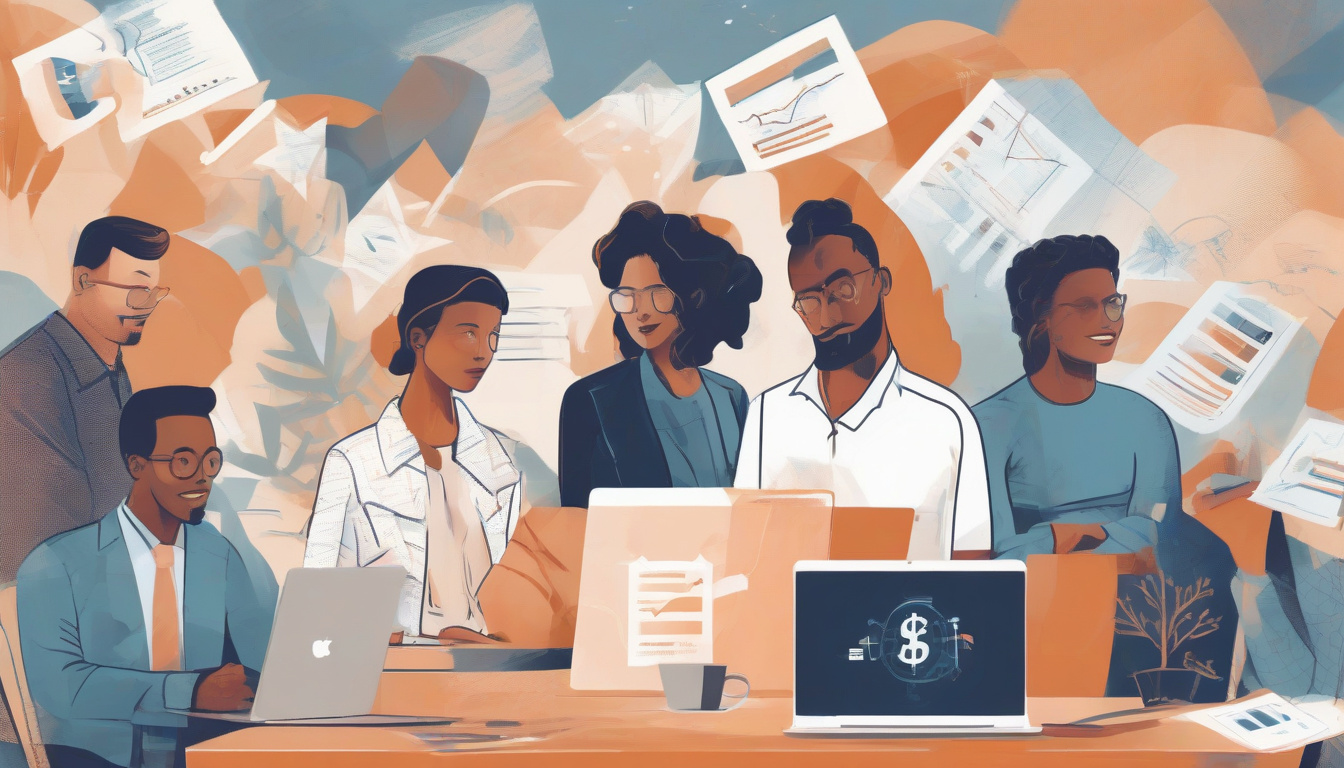Unlock Financial Freedom: Top Legitimate Debt Relief Programs You Can Trust
Debt can often feel overwhelming, leading many individuals to seek quick solutions that promise instant relief. However, not all debt relief options are created equal. In this article, we will explore legitimate debt relief programs that can help you regain control of your finances. Understanding the various types of debt relief available, how to spot trustworthy companies, and the pros and cons of these programs is crucial in making informed decisions. Additionally, we will offer insight into steps you can take after enrolling in a program, ensuring you’re on the right path to financial freedom. Join us as we unlock the doors to sustainable debt relief and empower you to take charge of your financial future.

Key Takeaways
- Debt relief programs come in various types, each catering to specific financial situations.
- Identifying trustworthy debt relief companies is crucial to avoid scams and ineffective solutions.
- The pros of debt relief programs include reduced financial stress, but they can also have downsides such as credit score impact.
- Understanding the requirements and consequences of debt relief programs is essential before enrolling.
- Following up on your progress after enrolling in a debt relief program can help ensure you stay on track towards financial freedom.
Understanding Debt Relief: What You Need to Know
Debt relief refers to various strategies and programs designed to help individuals manage or reduce their financial obligations. When discussing legitimate debt relief programs, it’s crucial to differentiate these from potential scams. These programs can take many forms, including debt consolidation, debt settlement, and bankruptcy. Each option has its own set of regulations, eligibility criteria, and impacts on credit scores. For example, debt consolidation combines multiple debts into a single loan with a lower interest rate, making repayment simpler and more manageable. On the other hand, debt settlement involves negotiating with creditors to reduce the total amount owed, which can significantly impact your credit score. It is essential to research and evaluate the legitimacy of any program you consider. Looking for certified credit counseling organizations, checking their accreditation, and reading reviews can help ensure that you’re choosing a reputable option to alleviate your financial burdens.
Types of Legitimate Debt Relief Programs
When grappling with overwhelming financial burdens, individuals frequently seek viable options for relief. Understanding the various types of legitimate debt relief programs can open doors to effective solutions tailored to specific needs and situations. Here are some prevalent forms of debt relief programs:
###
1. Credit Counseling Services
Credit counseling programs provide guidance to individuals struggling with debt. These services often involve analyzing personal finances, creating budgets, and developing a tailored debt repayment plan.
###
2. Debt Management Plans (DMP)
A step beyond credit counseling, a DMP involves working with a credit counseling agency to consolidate debts into a single monthly payment, potentially at a lower interest rate. It’s designed for people with unsecured debts like credit cards.
###
3. Debt Settlement Programs
In a debt settlement program, a consumer negotiates with creditors to reduce the total amount owed. Typically, services charge a fee based on the debt settled, and this can significantly lower the balance, although it may impact the credit score.
###
4. Bankruptcy Options
Filing for bankruptcy can dissuade creditors from pursuing collection efforts. Chapter 7 bankruptcy eliminates most unsecured debts, while Chapter 13 provides a repayment plan to manage debts over three to five years.
###
5. Peer-to-Peer Lending
This innovative approach allows individuals to borrow money directly from other individuals through online platforms. It can be a viable option for those looking to pay off higher-interest debts at a lower rate.
###
6. Debt Consolidation Loans
Debt consolidation loans combine multiple debts into a single, lower-interest loan. This can simplify payments and potentially save money on interest. However, it’s important to address the underlying spending behaviors to avoid future debt.
###
7. Federal Debt Relief Programs
Various federal programs aim at helping specific groups, including veterans and students. Programs like the Public Service Loan Forgiveness (PSLF) target those working in public service and can significantly relieve educational debt under specific conditions.
‘The way to get started is to quit talking and begin doing.’ – Walt Disney

How to Identify Trustworthy Debt Relief Companies
Identifying trustworthy debt relief companies is crucial for anyone looking to regain financial stability. The first step is to conduct thorough research. Check for accreditation: legitimate debt relief programs often have certifications from organizations like the National Foundation for Credit Counseling (NFCC) or the Financial Counseling Association of America (FCAA). Additionally, review customer testimonials and in-depth online reviews on platforms such as the Better Business Bureau (BBB) or Trustpilot, which can give insights into others’ experiences with the company.
Next, assess their services offered: a credible company will clearly outline its services, such as debt settlement, credit counseling, or debt management plans. They should also provide a transparent fee structure, allowing you to understand any costs associated with their services before you commit. Beware of companies that require large upfront fees or guarantee specific results, as these are red flags that they might not have your best interests at heart.
Always ensure that the company offers personalized plans instead of one-size-fits-all solutions, as valid debt relief programs tailor their approaches to individual circumstances. Lastly, consider their customer service: a reliable company should offer accessible support channels, including phone, email, and chat, showing they’re there to help you navigate your financial challenges. By following these guidelines, you can better identify legitimate debt relief programs that meet your needs.
The Pros and Cons of Using Debt Relief Programs
When considering legitimate debt relief programs, it’s essential to weigh the pros and cons to determine if they fit your financial situation. Pros include accessibility; many programs offer free consultations, allowing you to understand your options without commitment. Additionally, they can help you reduce your overall debt burden by negotiating lower settlement amounts with creditors, often leading to reduced interest payments and managed monthly installments. Furthermore, these programs can provide emotional relief, alleviating the stress of overwhelming debt and giving you a structured plan towards financial freedom.
On the flip side, there are notable cons associated with these programs. First, there may be fees involved, which can sometimes negate the savings achieved through debt negotiation. Moreover, while these programs can help in the short term, they may negatively affect your credit score, as accounts not paid in full can be marked as settled rather than paid. There’s also the risk of scams; not all programs are reputable, making it critical to do thorough research before engaging with a provider. Finally, some debt relief options might not be suitable for everyone, especially those with higher incomes or assets that fall outside the program’s guidelines, potentially leading to unfavorable terms. In essence, understanding both sides can empower you to make informed decisions about utilizing debt relief programs.

Steps to Take After Enrolling in a Debt Relief Program
Once you choose a legitimate debt relief program, the journey doesn’t end after enrollment; it’s crucial to take strategic steps to maximize the benefits and ensure your financial recovery is successful. Here’s a breakdown of the essential actions to take immediately after enrolling:
###
1. Understand the Program Details
– Familiarize yourself with the specifics of your debt relief program. Review all documentation and contracts to clearly understand the terms, fees, and timelines. Ask questions if any part remains unclear.
###
2. Establish Open Communication
– Maintain regular contact with your debt relief counselor or service. Schedule periodic check-ins to discuss your progress and any challenges that may arise. Open communication will help you stay aligned with your goals and make necessary adjustments to your plan.
###
3. Monitor Your Credit Report
– After enrolling, regularly check your credit report for accuracy and updates. Monitor how your debts are being reported and ensure that creditors are correctly reflecting your new status. You can obtain free reports from authorized annualcreditreport.com.
###
4. Adjust Your Budget
– Create or revise your monthly budget to accommodate any changes resulting from your debt relief program. Ensure you have allocated funds for living expenses while meeting any new payment agreements.
###
5. Avoid New Debt
– Resist the temptation to incur new debts while you’re in a debt relief program. This step is crucial to maintaining your course towards financial recovery. Scrutinize any spending decisions and focus only on necessities.
###
6. Understand the Impact on Your Credit Score
– Acknowledge that opting for a legitimate debt relief program may temporarily impact your credit score. Knowing this will help you manage your expectations and ensure you’re prepared for any fluctuations.
###
7. Attend Financial Education Workshops
– Inquire if your debt relief service offers workshops or resources on financial literacy. Take advantage of these to learn skills for future financial stability, including budgeting, saving, and investing.
###
8. Review Progress Regularly
– Set aside time every month to review your debt repayment progress. Analyze how much debt you’ve reduced, how your budget is holding up, and whether you need to make further adjustments.
###
9. Stay Informed About Legal Rights
– Educate yourself on your rights under the Fair Debt Collection Practices Act and other relevant regulations. This knowledge will help protect you against any potential unethical practices by creditors or collectors.
###
10. Seek Support When Needed
– Seek support from family, friends, or support groups who understand your financial situation. Engaging with others can provide emotional support as you navigate through tough financial changes.
Frequently Asked Questions
What are legitimate debt relief programs?
Legitimate debt relief programs are services or strategies designed to help individuals reduce or eliminate their debt, typically offered by reputable companies that adhere to federal and state regulations. These programs include debt management, debt settlement, and consolidation.
How can I identify trustworthy debt relief companies?
To identify trustworthy debt relief companies, look for organizations that are accredited by the Better Business Bureau (BBB), read reviews, check for transparency in fees and services, and ensure they are licensed in your state.
What are the pros and cons of using debt relief programs?
Pros include potential debt reduction, an organized plan to manage payments, and reduced stress. Cons can involve fees, potential credit score impacts, and the possibility of being scammed if the company is not reputable.
What steps should I take after enrolling in a debt relief program?
After enrolling, you should maintain communication with your debt relief company, track your progress, avoid accumulating more debt, and create a budget to manage your finances more effectively.
Can debt relief programs negatively impact my credit score?
Yes, enrolling in a debt relief program can temporarily impact your credit score, especially with debt settlement, which may require you to stop making regular payments. However, responsibly managing your remaining debts can mitigate long-term effects.
